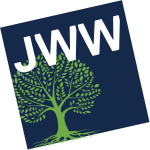I realized I felt the very same way last week, as I stood blinking in the bright sunlight looking down on a river bed that at once recalled scenes of biblical slavery as well as scenes from current documentaries on the cruel mining practices in many mineral mines of Africa today.
I think what made my heart and mind ache the most at this grotesque scene of modern slavery were the children. When we first approached the mine we heard hundreds of workers erupt into a chant. I was confused. Were they chanting some type of Congolese welcome song, like the women had sung to us days earlier at the refugee camp near Goma or the hospital meeting room in Bukavu? That seemed strange to me; it was unlikely that there would be visitors touring this very remote goldmine. Then, as the chant continued, I noticed dozens of very small children at the bottom of the pit running into the caves and alcoves in the mountainside. As the scurrying of children stopped, so did the chant. I then realized that the chant was a signal to the child slaves to hide from public view.
Even as we tour the historic mines of Placerville I can’t get the Congolese child slave miners out of my mind. Children like my 10 year old daughter and her friends forced to work, most likely under constant threat, for little or no pay, with no future. While the history of our country and its gold mines clearly includes a shameful element of xenophobia, slavery and persecution, to witness such abuse today is shocking to the core.
Yet the suffering, indignities and oppression I observed in Congo must all, one day, give way to a new society. In fact, we saw some hopeful indicators that such a new society is beginning to take form in the hearts and minds of a growing number of Congolese people who risk their lives to see this new society take shape. We met some of the Congolese heroes working to rebuild Congo: the women who are willing to tell their horrible and highly personal stories of the rape and destruction of their bodies or who are willing to risk their own physical safety, and that of their children, to help file legal complaints against rapists; men who go into the bush to persuade the militiamen and others to cease their brutal attacks on the women; the men and women who together are building organizations which will create the foundation of a new, civil society in which the rule of law will prevail; women who circulate through villages to encourage and train other women to run for local political office; children who overcome their murderous traumatic years as child soldiers or as sex slaves and who find the resolve to start new lives which reject or compartmentalize the nightmares of their pasts. These are the people whom Jewish World Watch will nurture, bolster, and support, both on its own and in partnership with the Eastern Congo Initiative.
We have already begun our work. Jewish World Watch, in partnership with IsraAid, several Israeli hospitals and Moriah Africa, has established Eastern Congo’s first burn treatment center. JWW underwrote the training of Congolese doctors who have travelled to Israel to receive training and who have learned from Israeli doctors who have come to Eastern Congo. Patients have already begun treatment and many more are coming from near and far as word spreads about the previously unthinkable possibility of relief for victims whose body parts have been fused for months or even years from catastrophic burns.
I have never really given much thought to the importance of there being a “light at the end of the tunnel.” Today, as I stood in the Placerville Goldbug Mine, I understood the literal meaning of the phrase and the importance of finding a light to guide my way out of the mine tunnels. But more importantly, I thought of the figurative meaning, for the children and the people of the Democratic Republic of Congo — for the enslaved miners and the sex slaves, for the heroes who are creating new institutions for education, healthcare and justice — our job is to keep the candles burning as they make their way to rebuilding their society. At this time when we retell the story of our ancestors’ liberation from slavery to freedom and rejoice in our own freedom, we are resolved to continue to shine a light on injustices suffered by others and use our hard-earned freedom to secure theirs.


